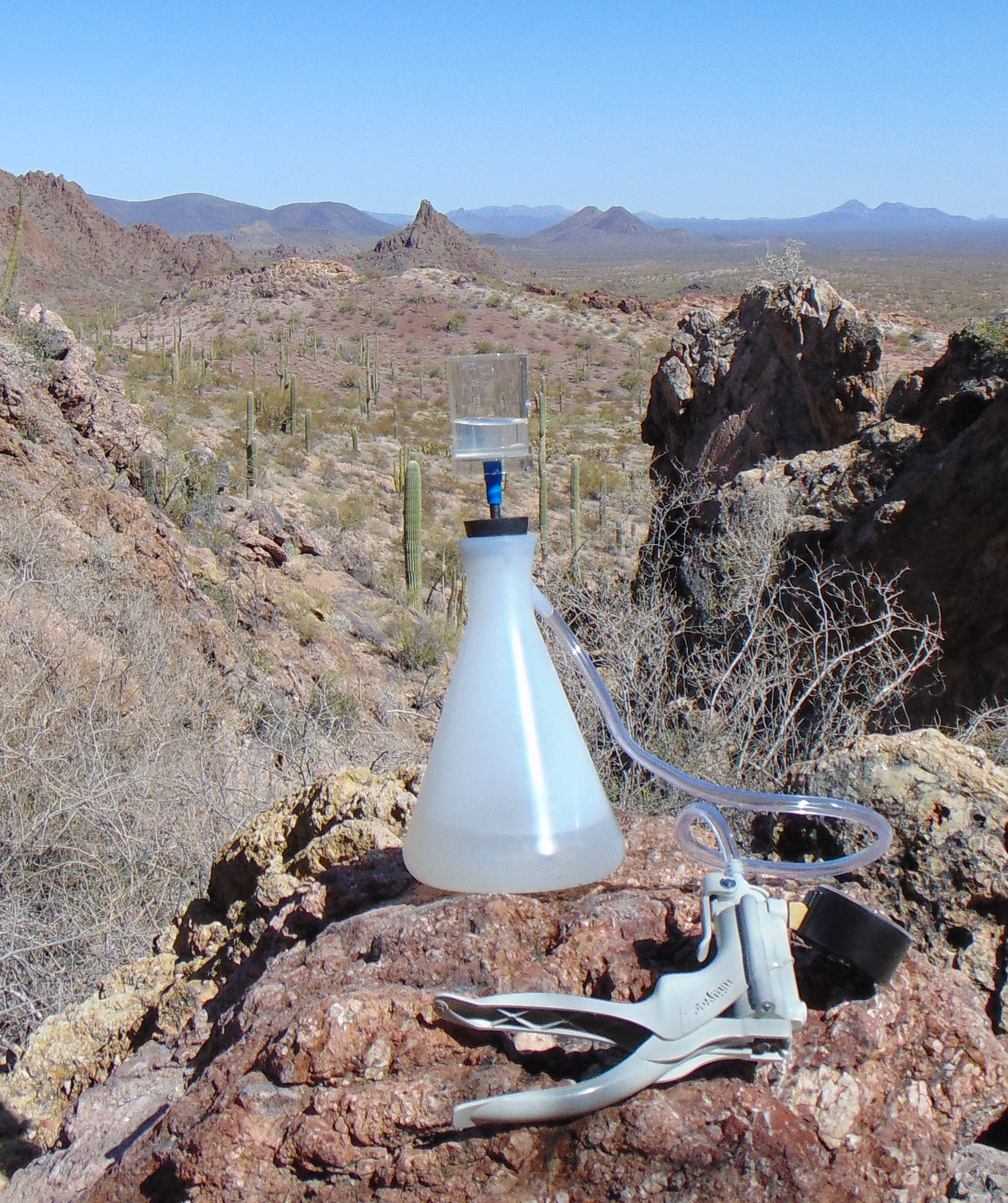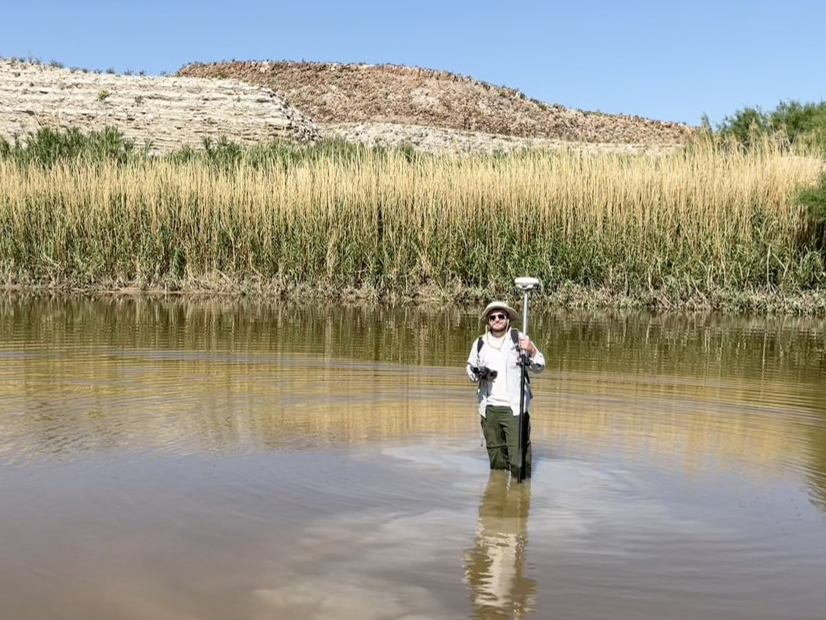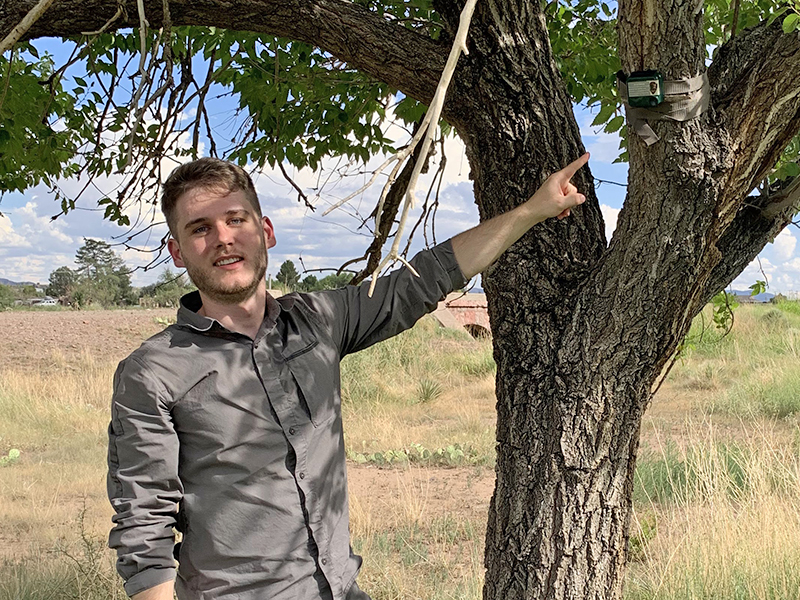Last updated: August 11, 2022
Article
The Heliograph: Summer 2022

The Heliograph is the newsletter for the Sonoran Desert Network and Desert Research Learning Center.
The common thread in this issue is the invaluable contributions of interns and partners to the Sonoran Desert Network program. None of the work described below would have been as successful—if even possible—without our International Volunteers in Parks, or our partners from the Southern Arizona Office, Tucson Audubon, and Southwest Network Collaboration.
eDNA Inventories to Reveal Species Use of SODN Springs
At nine Sonoran Desert Network (SODN) parks, our springs-monitoring crew is augmenting its usual monitoring with environmental DNA (eDNA) sampling, using methods developed in part by IVIP Josh Richards. eDNA sampling allows us to learn which species use a given area without capturing any part of an animal—not even its image.
The results of this inventory will be useful in several ways. They may impact which springs we monitor. If we detect something really important at a certain spring, it could become a higher priority for monitoring.The results may also help park managers prioritize springs for conservation based on which biota are there. And this information will allow us to contribute to general knowledge about which species are most common to which areas. Read more
In the future, the Chihuahuan Desert Network (CHDN) will also collect eDNA at springs. CHDN will similarly look for bullfrogs, chytrid fungus, and ranavirus, but will target slightly different species beyond that. If you're a CHDN park manager and would like to help decide which species those are, contact Jason Mateljak.
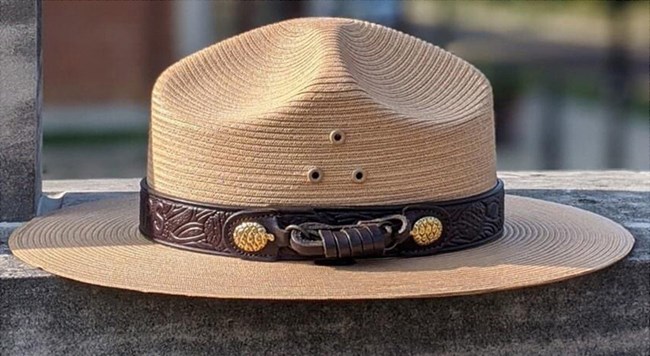
Resource Managers' Meeting Scheduled for October
The SODN Resource Managers’ Meeting has been scheduled for October 26–27, 2022. Fingers crossed and knocking wood, we hope to see you all at the Desert Research Learning Center for our first in-person gathering since 2019!
In one form or another, this event has taken place for 20 years—typically biannually, in October and April. It’s a terrific—and rare opportunity for park staff from across the Sonoran Desert and Apache Highlands to share ideas, challenges, and camaraderie. The meeting is interdisciplinary, with presentations and trainings useful to natural and cultural resource managers, interpreters, superintendents, and any other staff with an interest in the current status and future of park resources.
Potential topics to be covered at this year’s meeting include:
- an overview and examples of the Resist, Accept, Direct climate-change planning framework;
- the use of eDNA sampling for inventory and monitoring;
- a presentation/update on working with the PBS series SciGirls in the national parks;
- recent staff and other changes to the Southwest Network Collaboration; and
- audience-centered experience (ACE) training.
Have a project you’d like to receive some feedback on? Contact Andy Hubbard or Sharlot Hart with your presentation idea.

First Wildlife Reports Released
The first reports from SODN’s terrestrial wildlife monitoring protocol have been released! You can find them on the webpage for that protocol or view them individually at the report pages for Chiricahua NM, Organ Pipe Cactus NM, and Saguaro NP–West. This protocol uses images from passively triggered remote wildlife cameras to monitor occupancy of medium- and large-sized mammals. The goal is to detect biologically significant changes in community and population parameters through time. A photo gallery of selected images is available and will be updated over time.

Climate and Water Report for Organ Pipe Cactus NM Released
Results of climate and water monitoring at Organ Pipe Cactus National Monument for Water Year 2021 are now available. At Organ Pipe, the influence of the 2020 "nonsoon" (regionally, one of the driest in the past century) is evident in the perennial-springs data, as is the (nearly) record-breaking super monsoon of 2021 in the climate data. The report can be found on the monument's Science & Research page and the SODN website.
Big-River Approaches Will Improve Monitoring of Smaller Streams
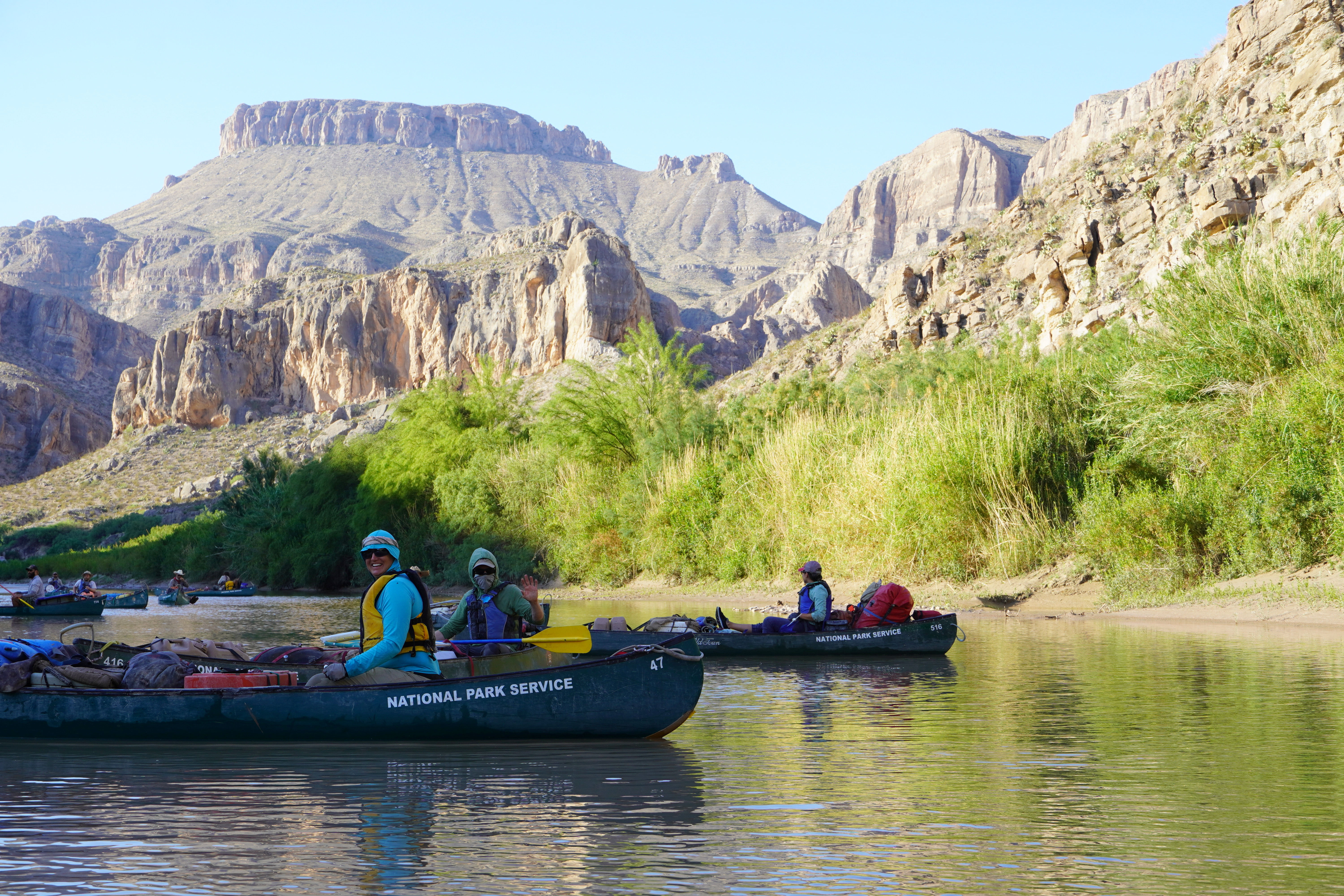
Experience gained on a big river is going to help us learn more about Sonoran Desert Network streams. For three weeks in May, an international group of staff from the NPS, Rio Bravo Restoration, and Mexico’s National Commission of Protected Areas collected data on channel morphology and riparian vegetation along the Rio Grande at Big Bend National Park.
Following a big-rivers protocol developed by the Northern Colorado Plateau Network (NCPN), SODN staff learned techniques whose application will improve our ability to implement the SODN streams protocol. That protocol includes a channel-morphology component, but until now, we lacked adequate techniques and technology to achieve reliable results.
Real-Time Kinematic (RTK) surveying equipment is changing that. In the past, SODN staff used a total station to collect data on channel shape. But the dense riparian vegetation of our perennial rivers and streams limits the effectiveness of total stations, which rely on line-of-sight for data collection. Survey-grade RTK equipment relies on satellite information rather than line-of-sight, so it's less affected by dense cover. The RTK technology is also several times faster and provides “real world” coordinates, rather than coordinates relative to a known and hopefully permanent point.
Unfortunately, it’s expensive. But with funding from the recent servicewide Global Navigation Satellite System (GNSS) equipment acquisition program, the Southern Arizona Office (SOAR) was able to acquire new RTK technology that is now available for use by SODN and park staff. Our longtime SOAR pals and partners Irina Rodriguez and Jake DeGayner have trained us to use the new equipment, both in the field and at a training held at the Desert Research Learning Center this past April.
Using knowledge and experience gained on the Rio Grande, SODN staff recently used SOAR's RTK gear to collect data on channel morphology and riparian vegetation at Gila Cliff Dwellings National Monument. The results should start to correct a longtime gap in SODN streams monitoring. Past data collected with total stations will be able to be used in conjunction with the new RTK data.
Collaborating with the NCPN offers mutual advantages. Developing the database for NCPN's big-rivers protocol has proven challenging. But with SODN and the Chihuahuan Desert Network both planning to adopt the NCPN sampling design, approach, and methods, all three networks’ data managers are working together to create a functional database, as well as tools and procedures for certifying and publishing the data.
Intern Spotlight!
Over the years, SODN has welcomed many international volunteers through the National Park Service's International Volunteers in Parks (IVIP) program. Recently, we've hosted Josh Richards, from Dunfermline, Scotland, and Wesley Reverdy, of Thionville, France. Josh helped develop the protocol for our eDNA inventory. Wesley is helping evaluate the use of passive acoustic recorders for bird and bat monitoring for the Chihuahuan Desert Network and assisting with SODN's mammals monitoring. To learn about Josh and Wesley and their work with the networks, click on their photos below.
At the Desert Research Learning Center
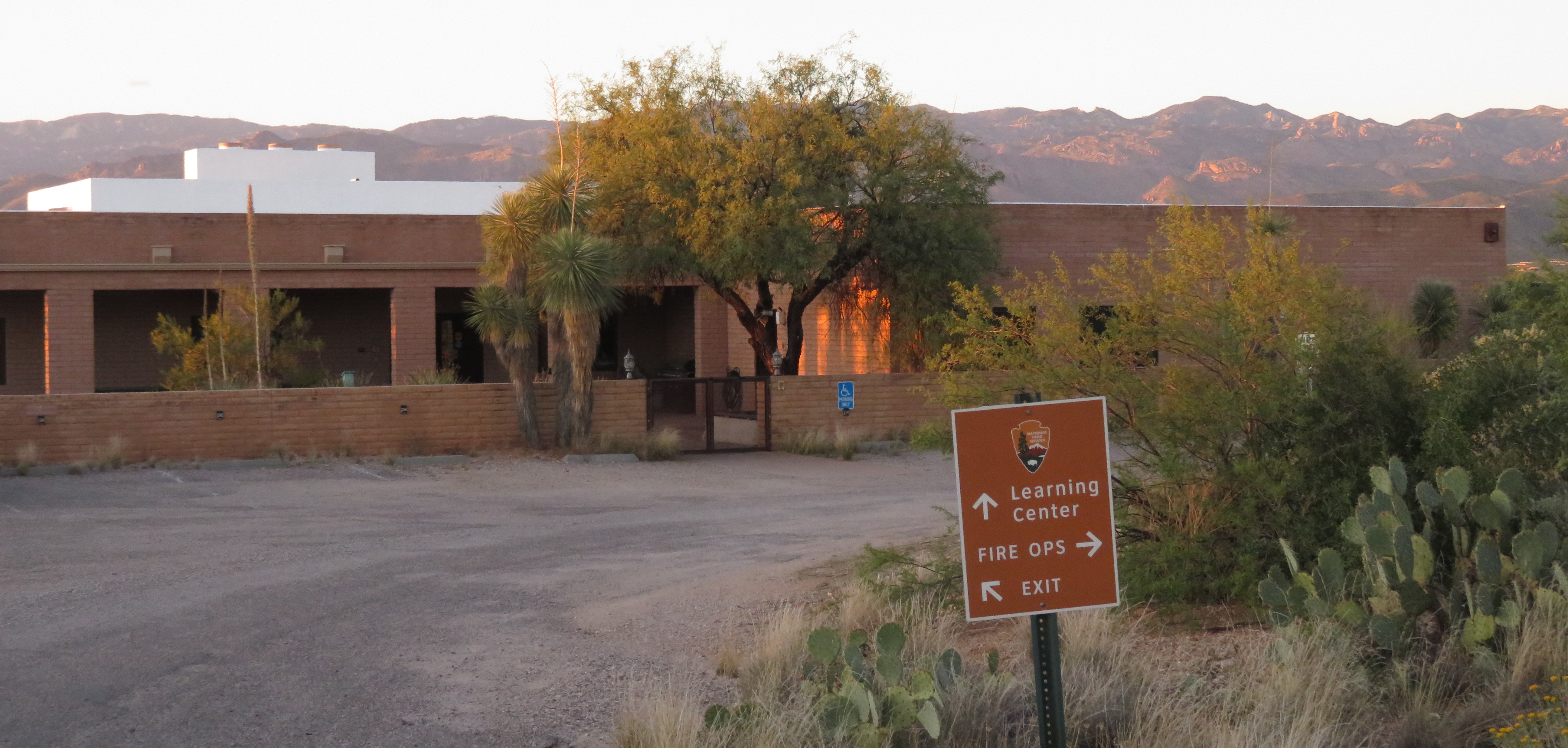
After a quiet couple of years, the Desert Research Learning Center is back in business! For the first time since 2020, the DRLC is hosting International Volunteers in Parks as well as student interns. We have also been partnering with Saguaro National Park’s education team on programming. With support from our staff, interpretive ranger Melanie Rawlins and her team have used the DRLC as a home base for Junior Ranger programs, a hiking club, a community poetry workshop, and programs for local elementary schools. The DRLC also hosted a panel of NPS employees for the Ironwood Tree Experience’s Youth for Blue Skies program focusing on air pollution and climate change. Tucson Audubon, another DRLC partner, has also been hosting programs at the center.
As much as possible, events have taken place outside. Outdoor tours have resumed, and in collaboration with the Arizona Game and Fish Department, a group of special-needs students from Cienega High School assisted with a fish survey of the DRLC’s tinaja and stream. The goal was to estimate the DRLC population of desert pupfish, speckled dace, and desert suckers.
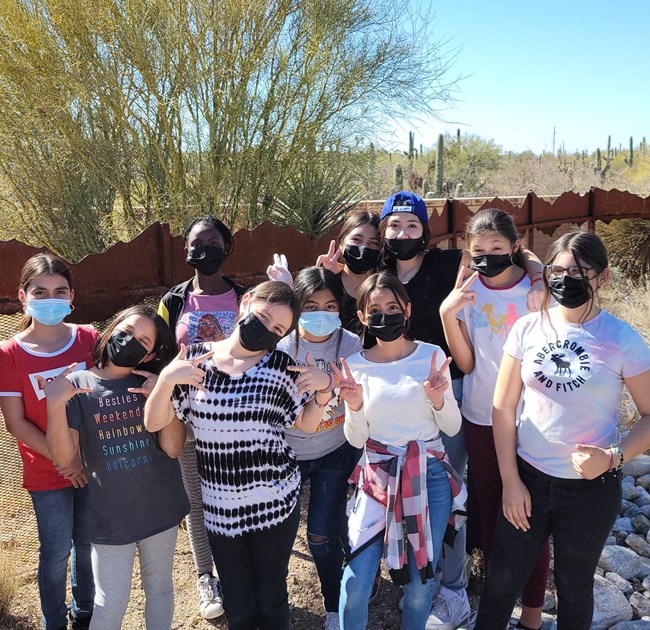
At what we’ve come to call our “Adobe Stonehenge” area, Southern Arizona Group (SOAR) archeologist Sharlot Hart has been working with the PBS series SciGirls to continue research through experimental treatments applied by local students. To test the resilience of multiple plaster amendments on adobe walls, fifth- and sixth-grade girls from Tucson’s Walter Douglas Elementary School built a set of even smaller(!) adobe test walls than the ones already at the DRLC. Following the SciGirls educational model, the girls presented their findings to both female NPS mentors (at Casa Grande Ruins NM) and first-grade students at their school. Their mini-Adobehenge results will factor into next steps, planning, and research questions for the larger Adobe Stonehenge project.
Finally, with the help from Arizona Master Naturalist volunteers, we’ve established a phenology trail around the DRLC that links to the USA National Phenology Network’s citizen-science phenology database. Plants at sites along the DRLC nature trail have been identified and entered into the Nature’s Notebook for long-term tracking of different phenological phases, such as blooming, budding, and when pollinators are present. By pooling the data, seasonal changes can be tracked for different plants across Tucson, the Southwest, and the nation. To help with this project or collect data along our phenology trail, contact Elise Dillingham to arrange a visit to the DRLC.
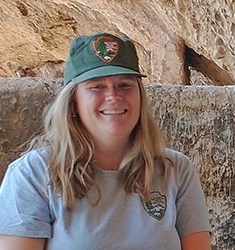
Sharlot Hart Wins Regional Director’s Award
Sonoran Desert Network partner Sharlot Hart won the 2021 Regional Director’s Award for Professional Achievement in Field-based Archeology. Sharlot conceived and coordinated multi-disciplinary research on the impacts of changing seasonal precipitation patterns on adobe architecture. The results will be useful to resource managers across the Southwest as they navigate the impacts of climate change on earthen architecture. Congratulations, Sharlot!
Project Updates
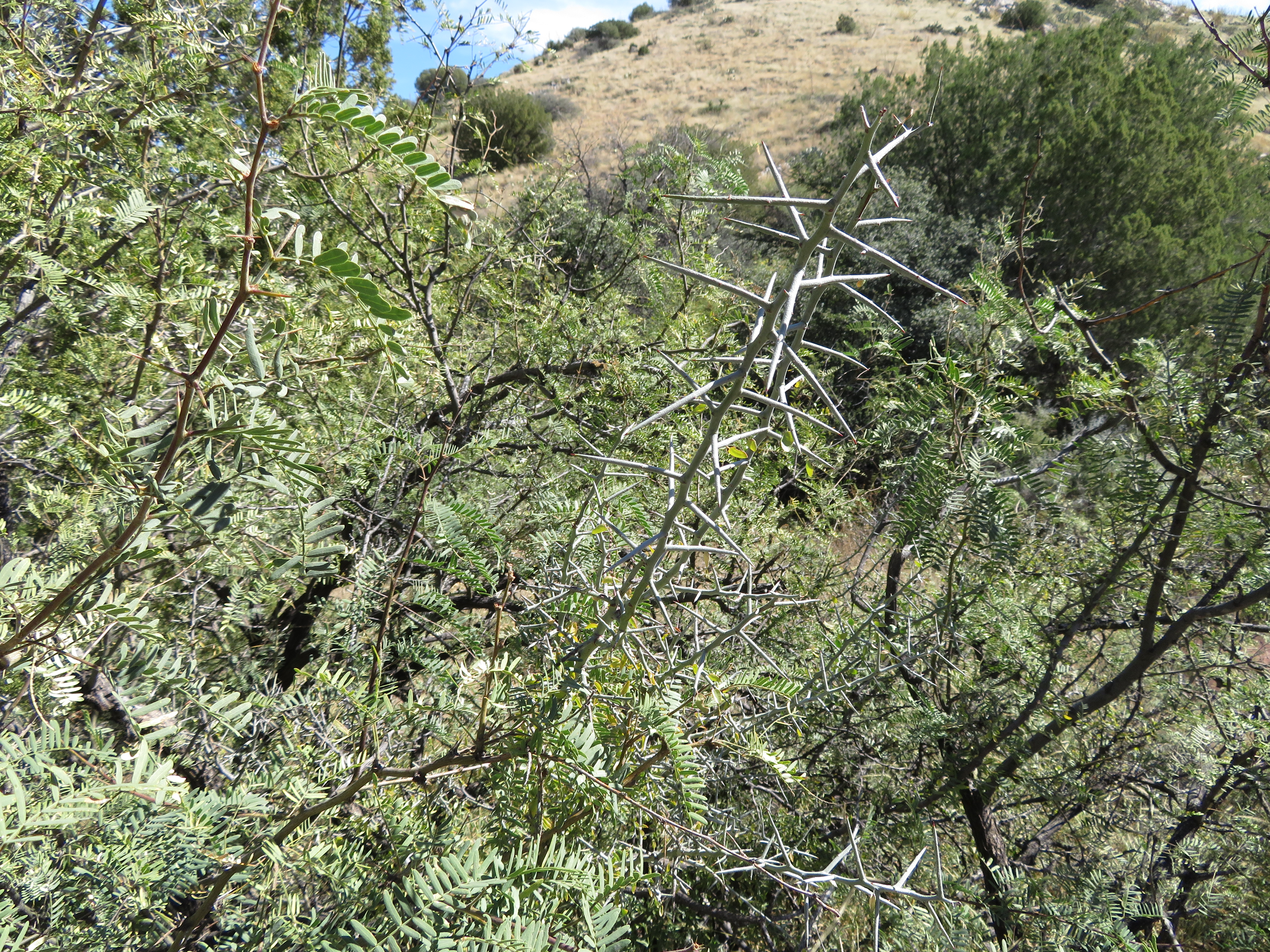 Mesquite.
Mesquite.Vegetation and Soils
Uplands vegetation monitoring will continue this fall. Routine sampling will occur at Saguaro NP, Coronado NMEM, Chiricahua NM, and Organ Pipe Cactus NM. We have also renewed our joint partnerships with Pima County’s Office of Sustainability and Conservation and Tucson Audubon Society: for the next five years, we will continue to assist at monitoring sites on county lands around the greater Tucson area.
Vegetation crews will help the NPS Fire Ecology branch to collect post-fire data on upper-elevation plots of Saguaro NP in September, and Chiricahua NM in October. This is an ongoing effort to collaborate with the fire program and share our skilled field botany staff to reach common program goals of monitoring forest health, resilience, and recovery after wildfire.
Springs
In June, we completed our fifth year of perennial-springs monitoring in the nine SODN parks with springs (sorry, Casa Grande Ruins NM and Tumacácori NHP!). Fall sampling is planned for the higher elevations of Saguaro NP in September, continuing at middle- and lower-elevation springs throughout the fall. As with the spring 2022 sampling, we are integrating a sensitive-species and threats inventory into the monitoring by collecting environmental DNA (eDNA) samples at all sentinel-spring locations. We are currently processing the 2022 data ahead of our annual web reporting. One early observation is that most sites appear to have recovered from the historically dry conditions of 2020, thanks in large part to a very productive 2021 monsoon. Still, a few “perennial” springs remained dry ahead of the 2022 monsoon.
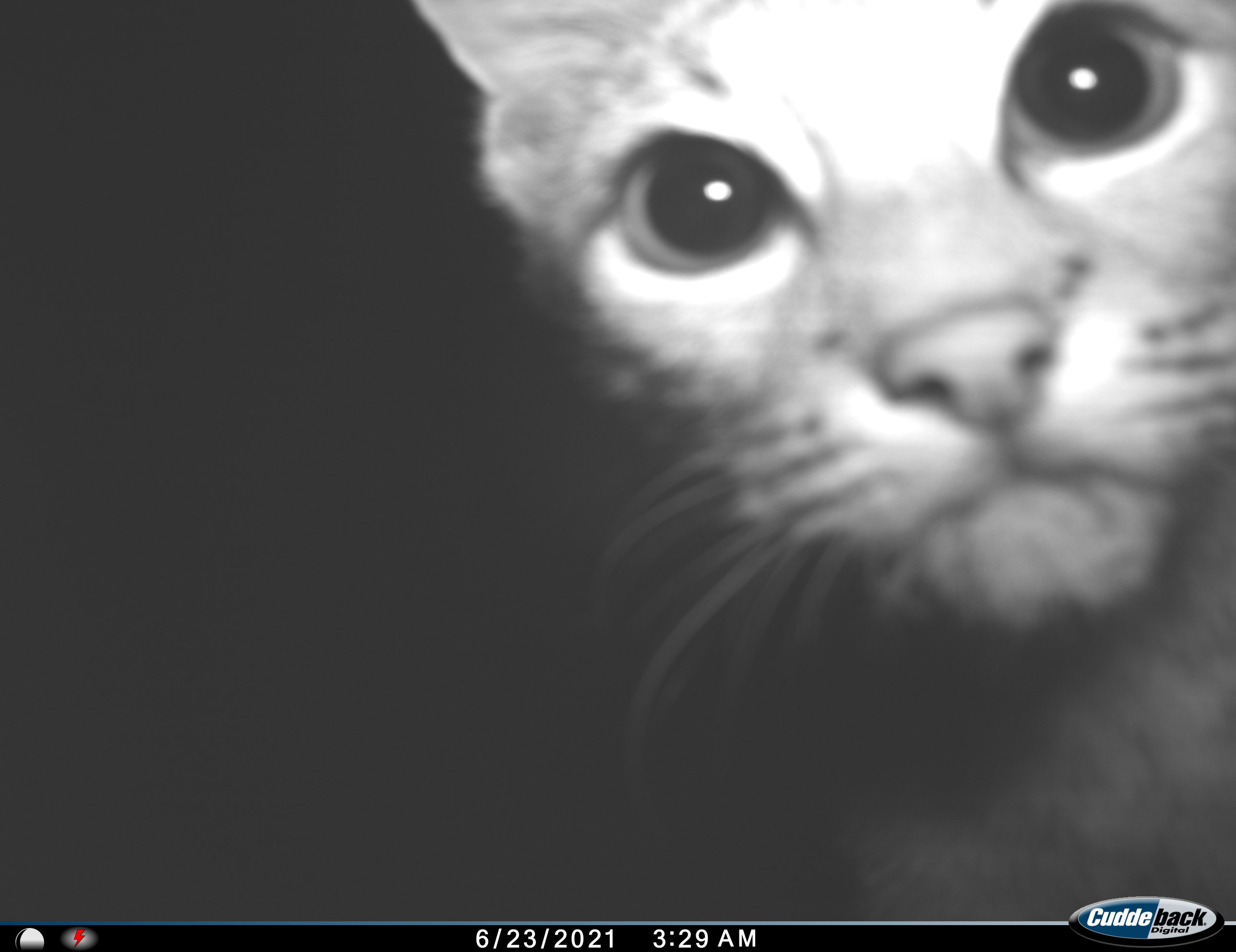 Bobcat at Chiricahua NM.
Bobcat at Chiricahua NM.Wildlife
Our wildlife-monitoring field crew deployed wildlife cameras at three park units in 2022: Saguaro National Park’s Tucson Mountain District (59 cameras from January to February), Organ Pipe Cactus National Monument (61 cameras from March to April), and Chiricahua National Monument (41 cameras from May to June). Deploying that many wildlife cameras in remote, backcountry locations requires substantial fieldwork. We want to thank everyone who assisted with this effort, including citizen scientists, two international volunteers, University of Arizona students, Tucson Audubon Society technicians, and interns from Saguaro National Park and Chiricahua National Monument. The data collected in 2022 will help us gain species-specific insights, such as new detections within the parks and potential drivers of species distributions. Data from multiple years will be used in occupancy modeling, which provides park managers with information on the status and trends in the population distribution and stability of mammal species.
Vegetation Mapping
The vegetation inventory report for Chiricahua NM is currently undergoing revisions and additions.
Streams
Riparian vegetation monitoring will occur for the fourth time at Gila Cliff Dwellings NM in August. This marks the third sampling effort since the 2011 Miller Fire swept through the river corridor, killing a high percentage of the park’s tall, dense, cottonwood and willow trees. We will collect species-level data on vegetation composition and look at the demographics of tree and shrub species as these communities continue to recover and regrow. Routine monitoring of water quality and quantity will continue this fall at Gila Cliff Dwellings, Montezuma Castle, Montezuma Well, Tuzigoot, and Tumacácori.
Tags
- casa grande ruins national monument
- chiricahua national monument
- coronado national memorial
- fort bowie national historic site
- gila cliff dwellings national monument
- montezuma castle national monument
- organ pipe cactus national monument
- saguaro national park
- tonto national monument
- tumacácori national historical park
- tuzigoot national monument
- newsletter
- sonoran desert network

